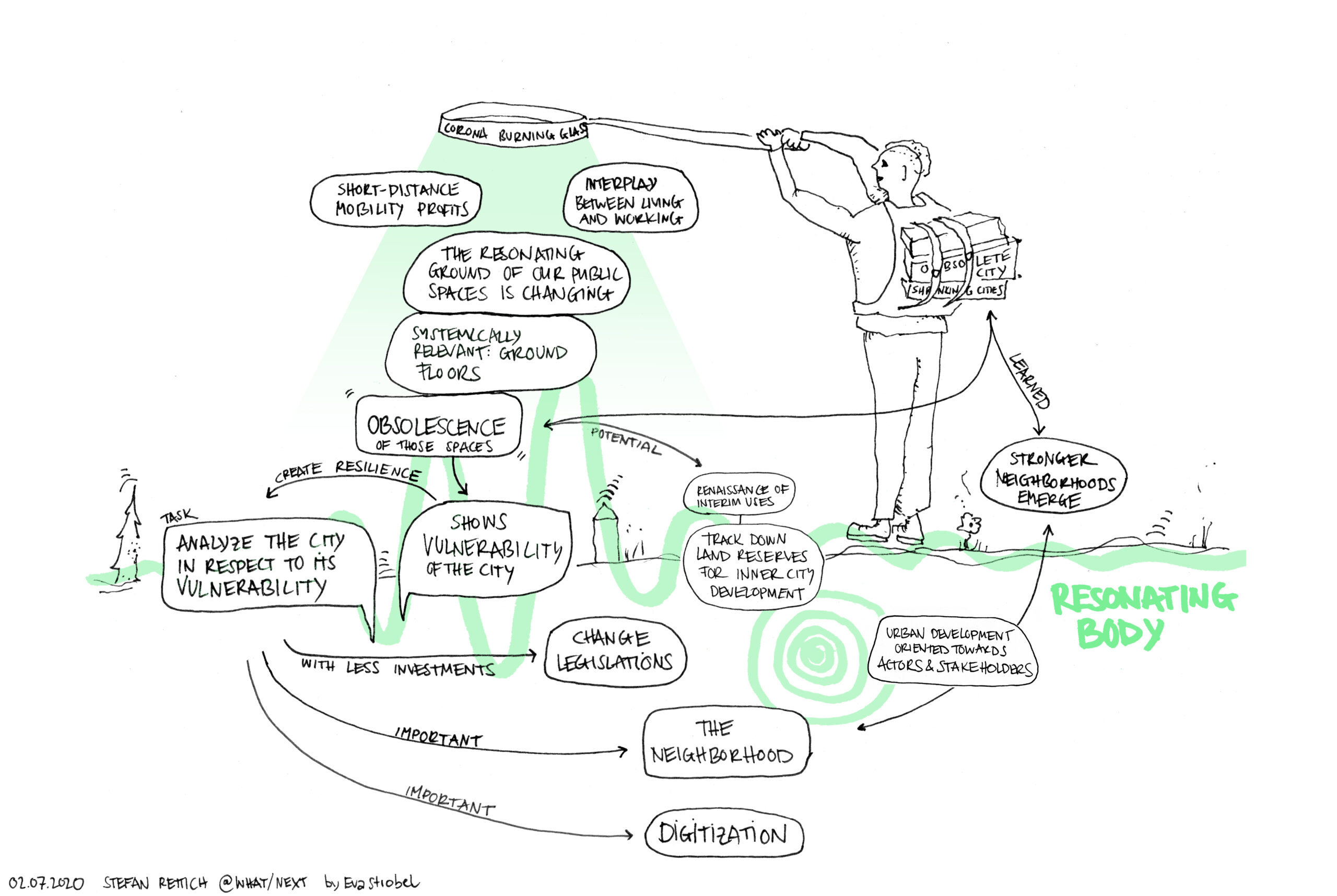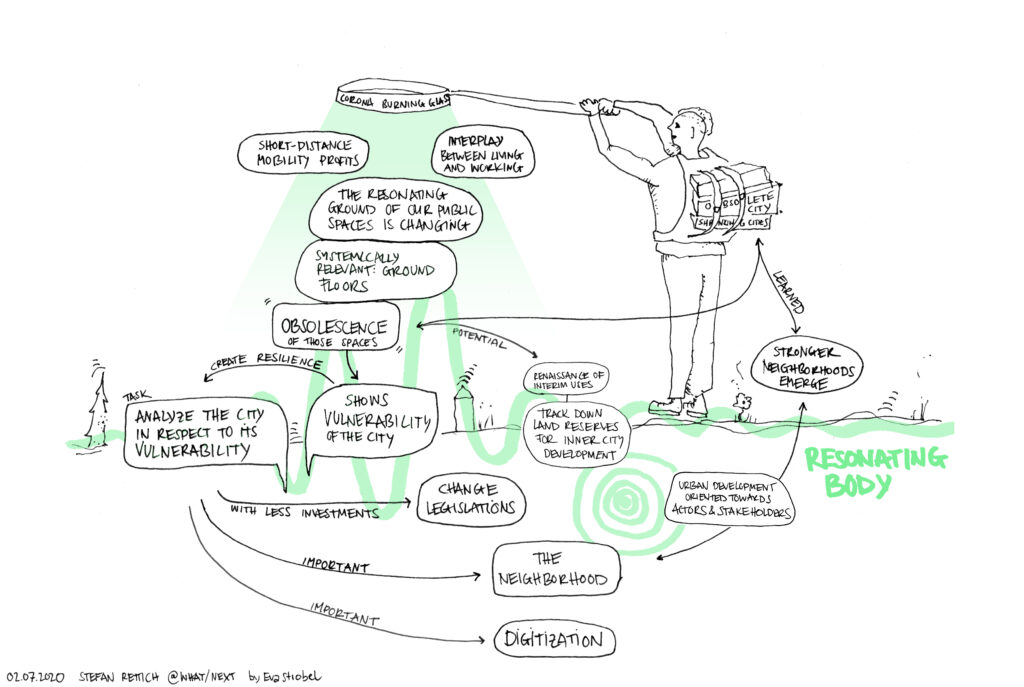
Urban Space Is a Resonating Body
Stadt als Resonanzkörper
Podcast in German: Stefan Rettich, July 2nd 2020
The public urban space – made of open spaces and the corresponding ground floor zones – is available to residents and users in a certain way. Now these spaces are no longer used, or they are used in a different way. Stefan Rettich is researching the potential of obsolete functions and their relations to public spaces and how we can develop the city to make it less vulnerable in the future.
Der öffentliche Stadtraum – bestehend aus Freiräumen und den dazugehörenden Erdgeschosszonen– steht für Bewohner*innen und Nutzer*innen auf eine bestimmte Weise zur Verfügung. Nun werden diese Räume nicht mehr oder auf eine andere Weise genutzt. Stefan Rettich forscht daran, welches Potential obsolet gewordene Funktionen und welche Beziehung diese zu öffentlichen Räume haben und wie wir zukünftig Stadt entwickeln können, damit sie weniger verwundbar ist.

Urban development is becoming more and more complicated due to the increasingly complex demands on urban space. The inner cities accommodate a multitude of different uses in their interplay. And the public spaces of a city – where masses of people meet in pursue of their actions – are designed by planners for this specific use, and believing that demands in density and activity rather grow in the future.
Our street levels are the resonating body of the public spaces.
Stefan Rettich 07/2020
In times of the Pandemic we are now observing that a large part of our vibrating spaces are no longer used in their original way: they have lost their full functionality. We can describe those urban spaces and functions as ‘obsolete’, i.e. that they no longer serve their purpose in the present time. They have become unusable, at least for a certain period of time. Above this, it unfolds that uses migrate and vacancies form. We are familiar with these processes from the past, except that today they occur suddenly and spontaneously many niches emerge. At some point we will be able to use our public spaces more freely again, but where exactly are we heading?
We can find land reserves for inner city development when we look at those that have become obsolete.
Stefan Rettich 07/2020
Stefan Rettich takes the Pandemic as an opportunity to identify the system-relevant resonance body of our cities through a Corona burning glass. Public space, including its first floor zones, is currently obsolete and presents itself as particularly vulnerable due to the changed rules of use – they resonate strongly. Many cities have developed a strong life of their own, partly due to the intensive use of public space over decades, even if intended by the planners. Just like our planning approach, which is developing more and more into an actor-oriented planning world. So there is a lot of potential through people and their adaptability. But what space do people need to be able to adapt well?
We must now call up the critical discourses that have taken place in the wake of crises: There might be a Renaissance of interim uses.
Stefan Rettich 07/2020
Compared to other crises, e.g. the Shrinking Cities phenomenon, everything happens very quickly in a pandemic. So it is important that we now recall the critical discourses that have already taken place and ask ourselves: How can we help ourselves to interim use without exploiting these pioneers? Which actors need which spaces? If money becomes scarcer in the future: what can we achieve that costs nothing? Where will we get the land reserves that we need for inner city development in the future? What role will digitalization play? So that our cities become more resilient and don’t fall into a shock-like state in the event of crises yet to come.
Stefan Rettich is an architect and professor at the University of Kassel, where he heads the Department of Urban Design. He is also founder and partner of KARO* architects in Leipzig. He has been working on transformation processes in our cities for many years. Within the framework of the project “Spielraum Urbane Transformation gestalten!” (Designing Urban Transformation Room) of the Robert Bosch Foundation, he is researching and designing together with six partners from various institutions on the topic of the “Obsolete City”.
Pingback: Future City - wie wir in Zukunft leben wollen - Die Wissenschaftsreporter
Pingback: #07 Future City - wie wir in Zukunft leben wollen - Die Wissenschaftsreporter